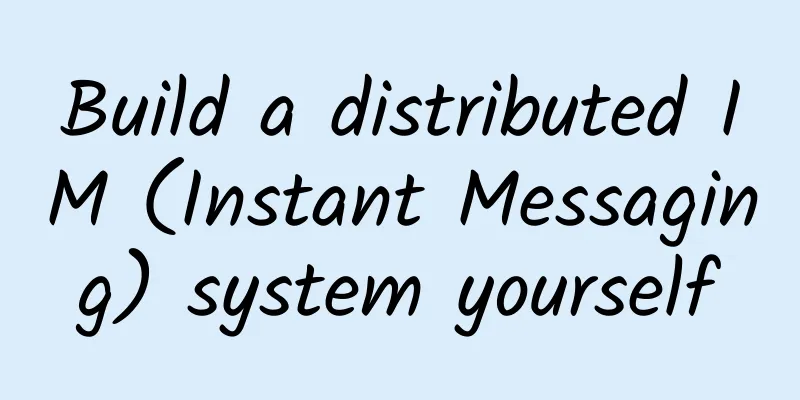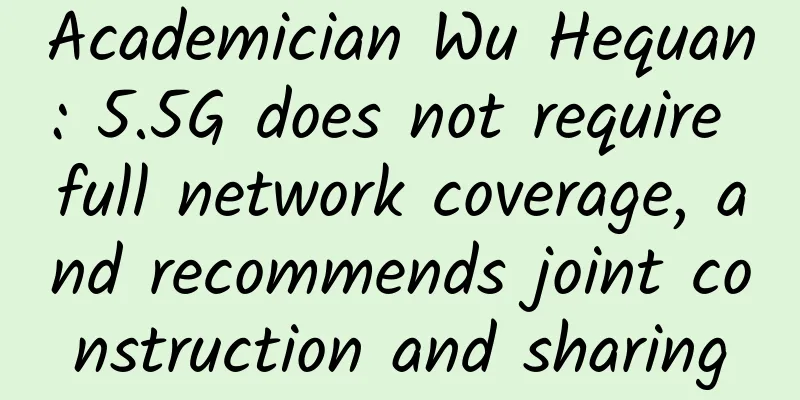Build a distributed IM (Instant Messaging) system yourself

|
I have shared an article "Designing a ***'s message push system" before. Although some pseudo code was posted in the article, some friends hope to share some executable source code directly. It has been so long, it's time to fill the hole. So I improved some content based on the previous ones. Let’s take a look at the introduction of this project: CIM (CROSS-IM) is an IM (instant messaging) system for developers. It also provides some components to help developers build their own horizontally scalable IM. With CIM, you can achieve the following requirements:
The complete source code is hosted on GitHub:
This time it mainly involves IM instant messaging, so I specially recorded two video demonstrations (group chat and private chat). Group Chat
Private Chat Architecture Design Let's take a look at the specific architecture design:
The whole system mainly consists of the following modules:
flow chart The overall process is relatively simple, the flow chart is as follows:
So when we deploy it ourselves, we need to follow these steps:
For more usage instructions, please refer to Quick Start. Detailed Design Next, we will focus on the specific implementation, such as how group chat and private chat messages flow; IM server load balancing; how services are registered and discovered, etc. IM Server Let’s first look at the server; it mainly implements functions such as client online and offline, and message sending. First, start the service: Since it is built in Spring Boot, the Netty service needs to be started when the application starts. From Pipline, we can see that Protobuf encoding and decoding is used (the specific message is analyzed in the client). Registration Discovery The horizontal expansion requirements of the IM server need to be met, so cim-server needs to publish its own data to the registration center. Therefore, after the application is successfully started, its own data needs to be registered in Zookeeper. The main purpose is to register the current application's ip + cim-server-port + http-port. The picture above shows two cim-server instances registered in the demonstration environment (since they are on the same server, only the ports are different). In this way, the client (listening to this Zookeeper node) can know the currently available service information in real time. Log in When the client requests the login interface in cim-forward-route (see below for details) and completes the business verification (just like logging into other websites on a daily basis), the client will initiate a long connection to the server, as shown in the previous process: At this time, the client will send a special message to indicate that it is currently logging in. After receiving it, the server needs to save the client's userID and the current Channel relationship. It also caches the user's information, namely userID and user name. Offline When the client is disconnected, the cached information also needs to be cleared. At the same time, you also need to call the Route interface to clear related information (see below for the specific interface). IM Routing As can be seen from the architecture diagram, the routing layer is a very important part; it provides a series of HTTP services to connect the client and the server. Currently, the main interfaces are as follows: ①Registration interface Since each client needs to be logged in before it can be used, the first step is naturally to register. The design here is relatively simple, using Redis directly to store user information; the user information only includes ID and userName. Just to facilitate the query, the KV in Redis stores a VK in turn, so that both the ID and userName must be unique. ②Login interface The login here is different from the login in cim-server and has a business nature:
In order to ensure that only one user can log in, the Set in Redis is used to save the login information; using userID as the key, duplicate logins will fail to be written. Similar to HashSet in Java, it can only save data without duplication. Getting an available routing instance is also relatively simple:
Of course, before obtaining the service instance in Zookeeper, you naturally need to listen to the node that cim-server previously registered. The specific code is as follows: It also monitors the routing nodes in Zookeeper after the application is started, and updates the internal cache once changes occur. Guava's Cache is used here, which is based on Concurrent HashMap, so the atomicity of clearing and adding cache can be guaranteed. ③Group chat interface This is a real message sending interface. The effect is that when one client sends a message, all other clients can receive it! The process is definitely that the client sends a message to the server. After receiving it, the server traverses all Channels in the SessionSocketHolder introduced above and then sends the message. The server can be a single machine, but now it is a cluster design. So all clients will be assigned to different cim-server instances according to the previous polling algorithm. Therefore, the routing layer is needed to play a role: After receiving the message, the routing interface first traverses the relationship between all clients and service instances. The routing relationship is stored in Redis as follows: Due to the single-threaded nature of Redis, when the amount of data is large; once Keys is used to match all cim-route:* data, Redis will be unable to process other requests. So here we use the Scan command to traverse all cim-route:*. Then we call the HTTP interface of each client's server one by one to push messages. The implementation in cim-server is as follows: After receiving the message, cim-server will query the internal cache for the channel of the userID, and then just send the message. ④Online user interface This is an auxiliary interface that can query the current online user information. The implementation is also very simple, that is, just query the one that saved the "user login status" before and reset it. ⑤Private chat interface The reason why getting online users is an auxiliary interface is that it is actually used to assist private chats. Generally speaking, before we can use private chat, we must know which users are currently online, and then you will know who you want to chat with privately. Something like this: In our scenario, the prerequisite for private chat is to obtain the userID of the online user. Therefore, after receiving the message, the private chat interface needs to query the cim-server instance information where the recipient is located, and the subsequent steps are the same as group chat. Call the HTTP interface of the instance where the recipient is located to send the message. The only difference is that group chats traverse all online users, while private chats only send one. ⑥Offline interface Once the client goes offline, we need to delete some information previously stored in Redis (routing information, login status). IM Client Some of the logic in the client has actually been discussed above. Log in The first step is to log in. You need to call the login interface of Route at startup, obtain the cim-server information and then create a connection. During the login process, the Route interface will determine whether it is a repeated login. If it is a repeated login, the program will be exited directly. The next step is to create a connection using the cim-server instance information (ip+port) returned by the Route interface. The first step is to send a login message to the server to let it maintain the relationship between the client and the Channel. Custom Protocol The login messages and real message messages mentioned above can be distinguished in our custom protocol. Since Google Protocol Buffer is used for encoding and decoding, let's take a look at the original format first. In fact, there are currently three fields in this protocol:
There are currently three main types, corresponding to different businesses: Heartbeat In order to maintain the connection between the client and the server, a heartbeat needs to be automatically sent every once in a while if no message is sent. The current strategy is to send a heartbeat packet to the server every minute: In this way, the server will receive a Ping heartbeat packet every minute if it does not receive any business message: Built-in commands The client also has some basic commands built in for ease of use. For example, entering :q will exit the client and shut down some system resources. When you enter :olu (short for onlineUser), the Route will be called to obtain all online user interfaces. Group Chat The use of group chat is very simple. You only need to enter a message in the console and press Enter. Then the group chat interface of Route will be called. Private Chat The same is true for private chats, but the prerequisite is that you need to trigger the keyword; use userId;; message content in this format to send a message to a certain user, so it is generally necessary to use the :olu command to obtain all online users before it is convenient to use. Message callback In order to meet some customized requirements, such as the need to save messages, the client will call back an interface after receiving the message, in which the implementation can be customized. Therefore, a Caller Bean is created first. This Bean contains a CustomMsgHandleListener interface. If you need to handle it yourself, you only need to implement this interface. Customize the interface Since I am not very good at writing interfaces, but I am sure that other experts can write them, the group chat, private chat, online user acquisition, message callback and other services (as well as subsequent services) in the client are all provided in the form of interfaces. It is also convenient for later page integration. You only need to adjust these interfaces; you don’t need to worry about the specific implementation. Summarize Cim is currently only the latest version, with many bugs and few functions (only a few group members were invited to do the test); however, it will be improved later. At least this version will bring some ideas to friends who have no relevant experience. Next steps: |
<<: The most popular network trends in 2019
>>: Wi-Fi 6 forces basic network equipment to upgrade
Recommend
5G without "it" is like building a house without land
As a city's population continues to grow, it ...
Telecommunications industry survey: AI will become the top investment area in 2025
In the 2024 annual industry survey conducted by T...
DogYun National Day Promotion: 30% off on Dynamic Cloud, 20% off on Classic Cloud, 100 yuan/month discount on Dedicated Server, 100 yuan free for every 100 yuan you top up
DogYun is a Chinese hosting company established i...
Network slicing will become the ideal architecture for 5G, but commercial deployment still faces multiple challenges
The 5G era is coming, and applications based on m...
Comparative Analysis of Kubernetes Network Plugins (Flannel, Calico, Weave)
[[269494]] This article will focus on exploring a...
Smart building wiring, how to make a wise choice?
Smart building networks have many extremely speci...
GSA: More than 100 commercial 5G networks launched worldwide
On September 25, according to foreign media repor...
How to save a SaaS product that is unsustainable
[[355134]] I have briefly mentioned this topic be...
Riverbed China Survey: There is a huge gap between digital vision and digital performance
[Beijing, July 3, 2018] Digital performance compa...
my country's total 5G base stations account for more than 60% of the world's total
The 2021 Communications Industry Statistical Bull...
Home users use routers to surf the Internet, so how many mobile phones can be connected to one router at most?
I think everyone is still curious about this ques...
Ruijie's "Pioneer Wireless Office" settled in the Fortune 500 Kangmei Pharmaceutical and solved Wi-Fi problems in depth
Today, deploying Wi-Fi has become an important pa...
7 Industries That Will Be Revolutionized by the Internet of Things
What kind of revolutionary impact will the Intern...
In the wave of digital transformation, how should enterprise IT architecture change according to needs?
The wave of digitalization is driving the world e...
Will it be long before US telecom giant AT&T shuts down its 2G network in China?
As 4G networks become more popular, many operator...









